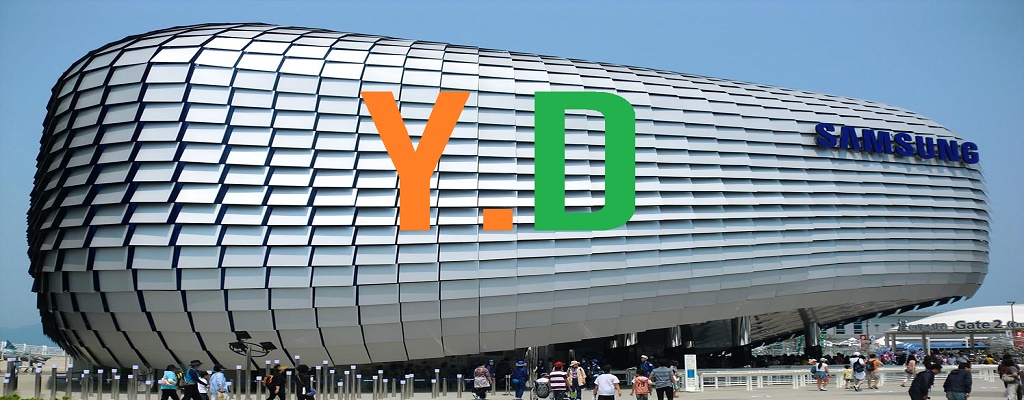Despite facing myriad economic and sociological problems, the fastest growing economy in the world, India, has seen tremendous growth in the consumer tech sphere. After becoming the world’s fastest-growing smartphone market, and recently eclipsing the United States to become the second-most popular place for smartphone sales across the globe, the country is all set to become the location of choice for many of the world’s biggest television makers.
Riding on the swelling pockets of a burgeoning middle-class population, the country’s television market is slated to cross the $9 billion mark by the end of 2021. However, unlike the smartphone market, which has seen much of its revenues generated from the sale of budget and mid-segment devices, television makers plying their trade in India have relied majorly on the premium segment to drive their revenues up.
One of the biggest beneficiaries of this strategy has been South Korean tech giant, Samsung.
Over the years, the company has relied on bringing latest technologies — albeit with high price tags — to become the market leader in the segment. However, simply remaining the segment leader does not appear to be enough for the company.
Mission 2018
With its 2018 range of televisions, Samsung is now looking to improve upon its current position in the premium segment in the coming four to five months. As Piyush Kunnapallil, general manager, TV Business, Samsung India, explained at a recent media event in Delhi, “We are currently dominating the QLED TV segment in the country with 47 per cent share. We are looking to increase our share in this segment to 55 per cent by the end of September-October.”
But how does it plan to achieve such lofty goals? By helping “fuel” the current trend of upsizing in the market. “We conducted extensive consumer research and found that consumers need more than just a TV for their living room… Consumers in India are upsizing and are moving to bigger and better televisions. We intend to fuel this trend by launching new products with innovative features.”
Samsung’s TV line-up for 2018
To this effect, Samsung recently unveiled new models in its flagship QLED and UHD TV series. Starting from the top of the pyramid, the QLED TVs, beginning at a retail price of Rs 2,45,000, will be available in 8 different models that range from 55-inch to 75-inch in screen size and bring with them curved and flat screen QLED panels.
The 2018 range of Samsung’s flagship panel technology TVs have also been equipped with a nifty little software trick that the tech giant calls the ‘Ambient Mode’. This feature basically helps the TV to “mimic the pattern on the wall behind the TV” to create a live image that helps it to seamlessly merge with the background. The feature can be easily activated by the user by simply clicking a picture of the wall with the TV in the frame, and uploading it using the Smart Things app.
The application also helps the TV to “connect to other IoT enabled devices for syncing and sharing content, sending notifications and mirroring screen and sound.”
To Samsung’s credit, they have also refined the one invisible connection cable that they introduced last year with the QLED TVs. Apart from transferring data from the connected devices such as set-top boxes and consoles hidden away from sight in a corner of the room, the wire can also transmit power to the television too.
However, the QLEDs disappoint with their lack of support for Samsung’s premier voice-based assistant, Bixby, with the outdated S-Voice platform being bundled with the TVs.
Interestingly though, that’s not the case for the international variants of the same QLED TVs, which come pre-installed with support for Bixby.
Samsung is also banking heavily on its UHD line-up to improve its business this year. The company will expand its UHD line-up from 10 to 16 models this year. The TVs will support HDR and Samsung’s Dynamic Crystal Color technology that the company claims can deliver “crystal clear tones across an expanded colour spectrum.”
The UHD TVs will come with “One Remote Control, Smart Hub and Smart Convergence” to pair a user’s Smartphone with a TV or vice-versa or a TV with a Bluetooth speaker to allow for 2-Way audio streaming. Entry-level UHDs will now start from the 7100 series, followed by the 7470, 8000 and finally The Frame. The UHD TV range will start from INR 64,900.
Will Samsung taste success?
Most likely, yes.
In a segment where there is very little real competition and one in which Samsung enjoys an unparalleled level of trust of buyers, it is easy to see the South Korean TV maker rule the roost in 2018 too. The new TV line-up powered by the state of the art technologies further puts Samsung in a very strong position going forward.
But that’s about it.
The new premium TVs are no market disrupters. Samsung here does not truly shake up the pot in terms of design and features. And that’s my biggest criticism of Samsung’s 2018 lineup. Yes, there’s Ambient Mode, and there is the revamped one invisible cable – yet, these are changes that are more iterative in nature than fresh and disruptive.
However, as the segment leader, maybe there was no need for disruption. Maybe the decision to play it safe was the right one. The answer to this will be revealed to us in the coming weeks and months. But, for now, with very little competition, Samsung looks more than likely to increase its dominance over the premium segment of the market.
Writer, SUSHANT TALWAR, Tech journalist, DailyO.


